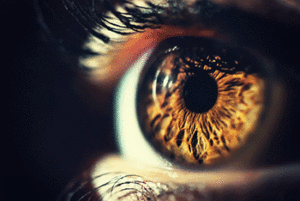Hallucinogenic persisting perception disorder, or HPPD, can develop as a result of long-term use and abuse of hallucinogenic drugs.
What Is HPPD?
Per Psychology Today, HPPD is a cognitive disorder in which people continue to experience hallucinations they first experienced while under the influence of a substance. These hallucinations also include visual ones.
It is more than the experience of psychosis while under the influence of a hallucinogenic drug or a single flashback in the days following a “bad trip.” HPPD is diagnosed only when the individual is no longer using hallucinogenic substances and continues to experience persistent flashbacks that can negatively impact their vision, cause anxiety, and make it difficult to function properly and manage day-to-day responsibilities.
How Common Is HPPD?
It is a rare disorder. Because it is so rare, it is often misdiagnosed and treated improperly as a result. According to Psychology Today, HPPD can occur along with other mental health disorders, including:
- Alcohol use disorder (AUD)
- Depression
- Panic disorder
Pseudo Flashbacks
The good news is that HPPD flashbacks are not as overwhelming as a regular flashback might be.
That is, rather than transporting the person back to that time and place mentally and emotionally in such a way that the person may not be able to separate what is real from what isn’t, HPPD creates visual disturbances only and not full-blown hallucinations.
Drugs that Cause HPPD
PCP (phencyclidine), mushrooms, and LSD (lysergic acid diethylamide) are the drugs most commonly associated with the development of HPPD. These strong drugs have extreme ranges of potency and chemical makeup. They can be very dangerous for the brain and its long-term function.
However, it is not just chronic use of psychedelics like these that can contribute to the development of HPPD, also sometimes called “Alice in Wonderland Syndrome,” or AIWS. Heavy marijuana use can also trigger the disorder, as can use of other substances that cause alterations in perception.
The kind of hallucinogen used as well as how much and whether they are taken with other substances can affect whether a person experiences HPPD and for how long they experience it.
The Neurosensory Research Foundation also lists other drugs that it says are known to cause HPPD. They are:
Synthetic cannabinoids: These human-made chemicals are new psychoactive substances (NSP) that act on the same brain cell receptors as delta-9-tetrahydrocannabinol, the mind-altering ingredient in marijuana. Common synthetic cannabinoids are K2, Spice, Scooby Snax, and others. They are sold as natural alternatives to marijuana, but they are highly addictive and dangerous to use.
Psilocybin (magic mushrooms): This naturally occurring psychedelic drug is found in various mushrooms from the genus Psilocybe. Its effects are similar to LSD and cause euphoria hallucinations, changes in perception, time distortion, and other reactions.
Salvia divinorum: This plant specie’s leaves are chewed or smoked for their psychedelic effects. Users can also take it as a tea. Its effects, which are similar to opioids, also can cause hallucinations.
MDMA: Also known as Molly and Ecstasy, 3,4-methylenedioxy-methamphetamine also affects users’ moods and perceptions. It can cause hallucinations and other effects.
MDA: Methylenedioxyamphetamine is a human-made recreational drug used for its psychedelic and stimulant effects similar to amphetamine and mescaline. It has no medical benefits, but it has been on the recreational drug scene since the 1960s.
5-MeO-DMT: Known in some circles as the God Molecule, 5-MeO-DMT is short for 5-Methoxy-N, N-dimethyltryptamine, a naturally occurring psychedelic substance that is stronger than DMT (N-dimethyltryptamine), another hallucinogenic drug found in ayahuasca. This illegal drug, which is found in a variety of plant species and the Colorado River toad, according to Double Blind Magazine, is more potent than DMT but lasts for a short time. Users inhale the drug or smoke toad venom while in its powder form.
2C-E and 2C-I: These research chemicals from the 2C family produce psychedelic, stimulant, and hallucinogenic effects similar to MDMA and LSD. They are designer drugs some use on the club scene.
A person could also experience HPPD after taking over-the-counter or prescription drugs, such as:
Dextromethorphan (DXM): Taking too much of this chemical found in cough medicine can bring on feelings of detachment from the body and hallucinations. A person can also experience aggression and paranoia.
Zolpidem (Ambien) and Eszopiclone (Lunesta): These sedative-hypnotic sleep aids for insomnia can also cause hallucinations if overused.
Diphenhydramine (Benadryl): This over-the-counter medication is used for allergies, but some also take it to treat their insomnia or common cold symptoms. An overdose could also cause HPPD symptoms.
Types of HPPD
There are two types of HPPD. People who have Type 1 experience short, occasional pseudo flashbacks. Those who have Type 2 experience continuous changes to their vision that come and go without warning.
HPPD Symptoms
The pseudo flashbacks in both cases can vary widely. Many people report experiencing any of the following as a part of HPPD:
- Colors may suddenly intensify or appear to be very bright.
- Color flashes may occur unexpectedly.
- Objects look smaller or larger than they actually are.
- Objects may seem to have halos around them.
- Images may appear within images.
- Reading may be more difficult, as words seem to jump and move on the page. The words can also appear scrambled, making it challenging to understand their meaning.
- Geometric patterns may appear and move though they are not really there. They may also appear to look like a certain shape or pattern that no one else can see.
- Outlines or traces of objects may appear and linger.
- Colors may not be as they seem; that is, blue may look purple, or red may look green.
Most people who experience these can tell they are not real and that their eyes are “playing tricks” on them. However, they may still feel embarrassed or frustrated if it does not pass quickly.
How is it Diagnosed?
HPPD is usually diagnosed after all of the following causes of the flashbacks have been ruled out:
- Regular use and abuse of psychedelic drugs
- Current use of a psychedelic substance
- Underlying mental health disorders
- Reaction to medication
- Brain damage
Testing may be necessary to rule out these potential causes. If a history of psychedelic drug use is known, HPPD may be diagnosed correctly.
Can the Effects Be Reversed?
Currently, no cure for HPPD is effective in the treatment of all individuals who are struggling with the disorder. Medications have been identified as effective in helping some people manage pseudo flashbacks caused by HPPD.
Some of the HPPD medications that have been found to be effective in treatment include:
- Naltrexone – This drug is used to treat opioid and alcohol use disorders, but some have found it helpful with HPPD treatment.
- Clonidine – This drug is traditionally used to treat high blood pressure either by itself or along with other prescription medications.
- Clonazepam – Also known as Klonopin, this benzodiazepine is used to treat anxiety disorders, such as panic attacks and certain types of seizures.
- Reboxetine – This prescription medication is an antidepressant drug that is used as part of some treatments for clinical depression, ADD and ADHD, and panic disorders.
Though there are cases that have reported a reduction or disappearance of symptoms after using the above drugs and others, there are often cases that support the use of one drug followed by another case study where the drug worsened symptoms.
 For example, one older case found that risperidone use caused panic in one HPPD patient, while another study found that the use of risperidone taken with sertraline was effective for another patient after six months of treatment.
For example, one older case found that risperidone use caused panic in one HPPD patient, while another study found that the use of risperidone taken with sertraline was effective for another patient after six months of treatment.
It is also important to note that several drugs were tried and found to be ineffective in the treatment of hallucinogen persisting perception disorder, including benzodiazepines. They served to exacerbate symptoms rather than relieve them.
What is the Timeline for Recovery?
Because there is no single treatment protocol proven to be effective in the treatment of HPPD, it is important for people who are struggling with the disorder to be patient and try different methods under the direction of an experienced medical professional.
Those living with pseudo flashbacks must stay committed to treatment. Suicide has been noted in patients who do not receive an accurate diagnosis and comprehensive treatment early in the process.
It is important to:
- Be aware of the symptoms.
- Immediately seek help.
- Continue with the treatment until a positive solution is found.
Long-term recovery from HPPD means taking medications that can ease the experience of pseudo flashbacks and engaging in a lifestyle plan that supports mental health and wellness.
For this reason, treatment for HPPD often begins with care for a substance use disorder if the use of any mind-altering substance is frequent. In this case, HPPD may be identified as a disorder that co-occurs with addiction, requiring people to find a drug rehab program that allows them to take advantage of a combination of the following:
- Medical detox support to manage withdrawal symptoms that arise emotionally, mentally, and physically
- Therapeutic support that is traditional as well as experiential to allow for growth and healing on multiple levels
- Peer support that is found in the creation of a therapeutic community
- Family support and care to help everyone close to the person in crisis begin to heal together
- Treatment for issues related to trauma and co-occurring mental health disorders like depression, anxiety, schizophrenia, and others
- Long-term support in the aftercare process, as all co-occurring disorders, including HPPD, are managed and slowly brought under control
Though it can take time to find the right treatment regimen and begin to feel comfortable again, it is a process that is well worth the effort. The more time that is spent finding out what works and what doesn’t, the easier it will be to create a sustainable life in recovery.
It can take years for HPPD to begin. Even if drug use occurred a decade or more in the past, it might be that HPPD is the cause of the problem.

